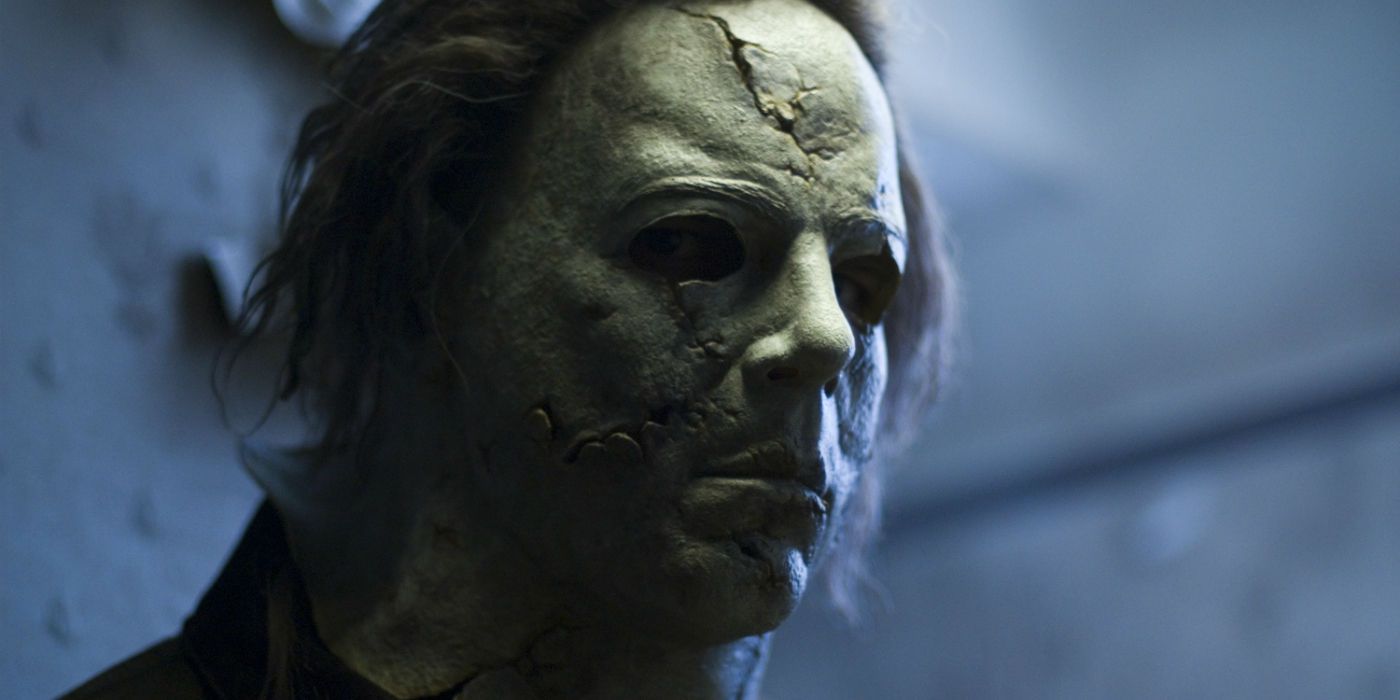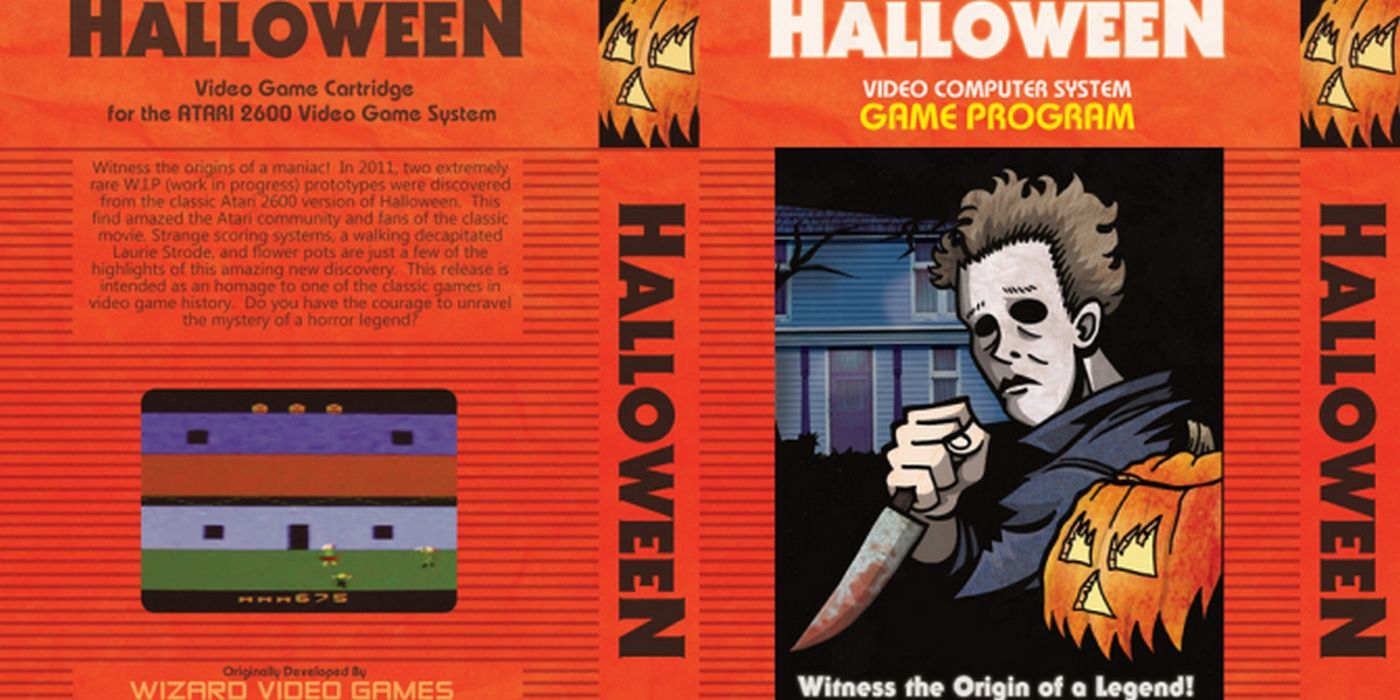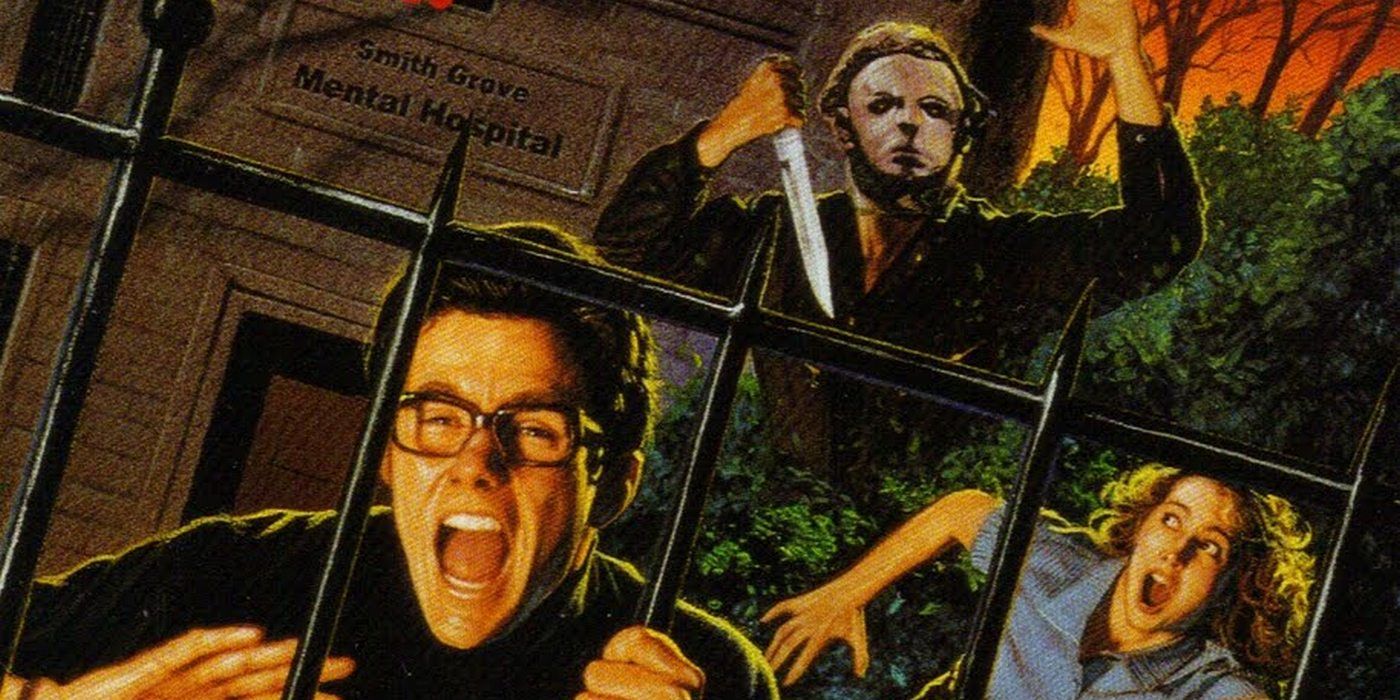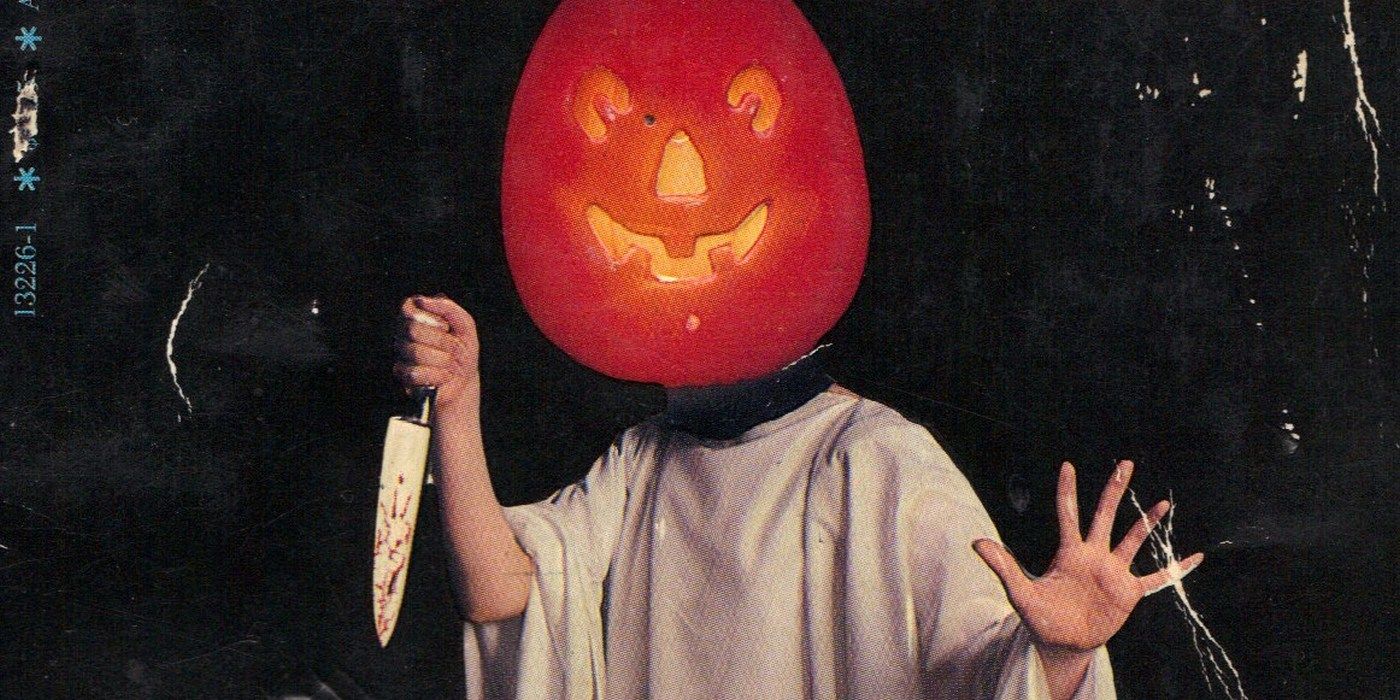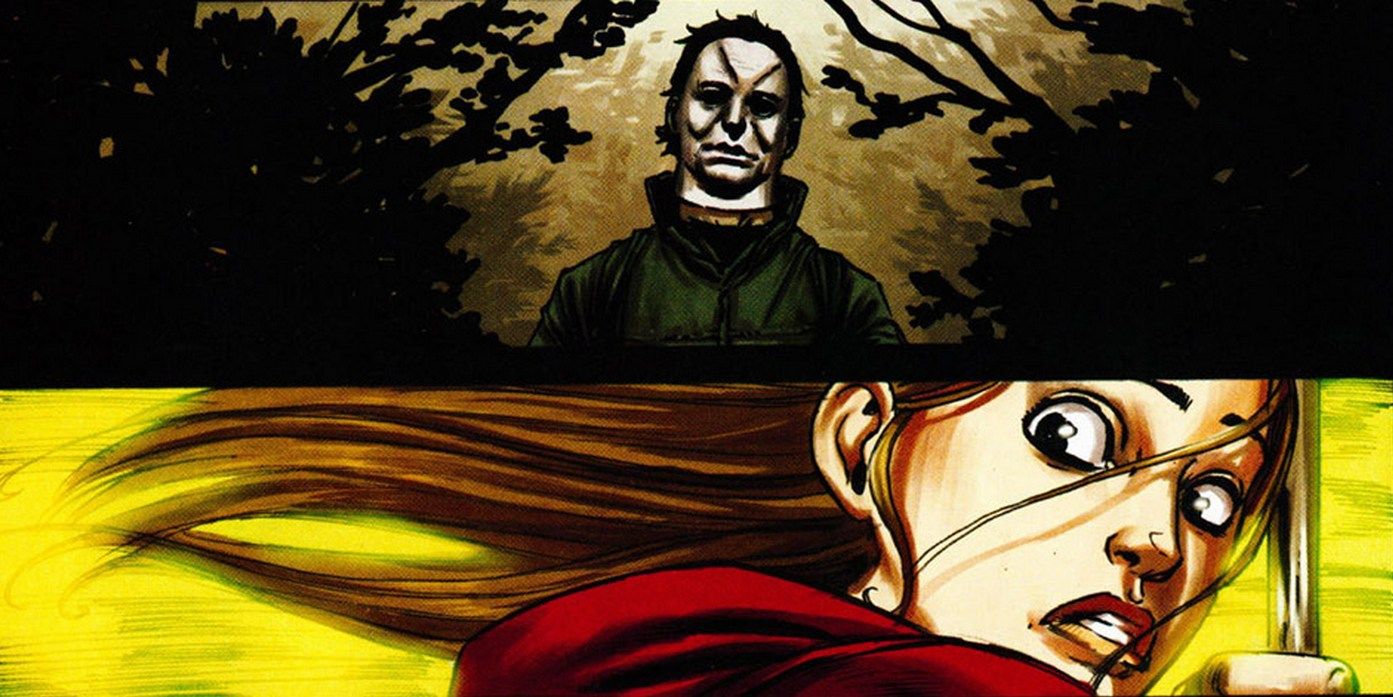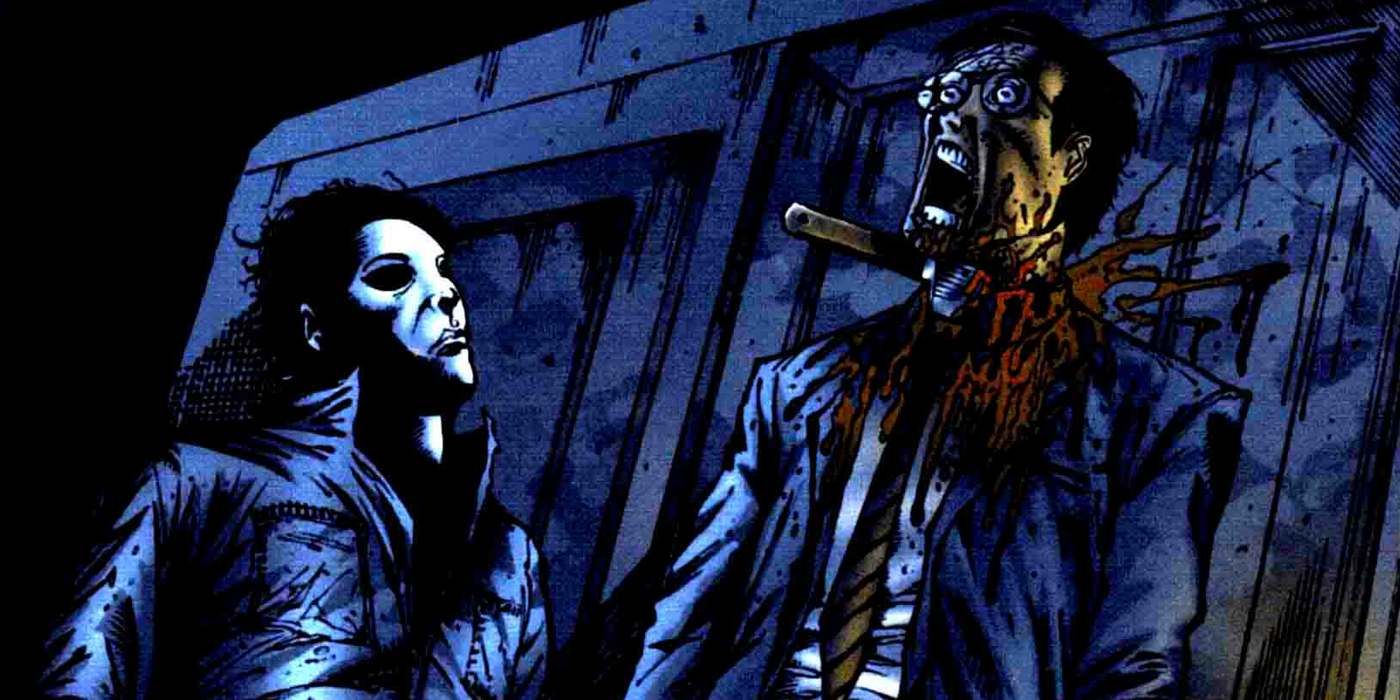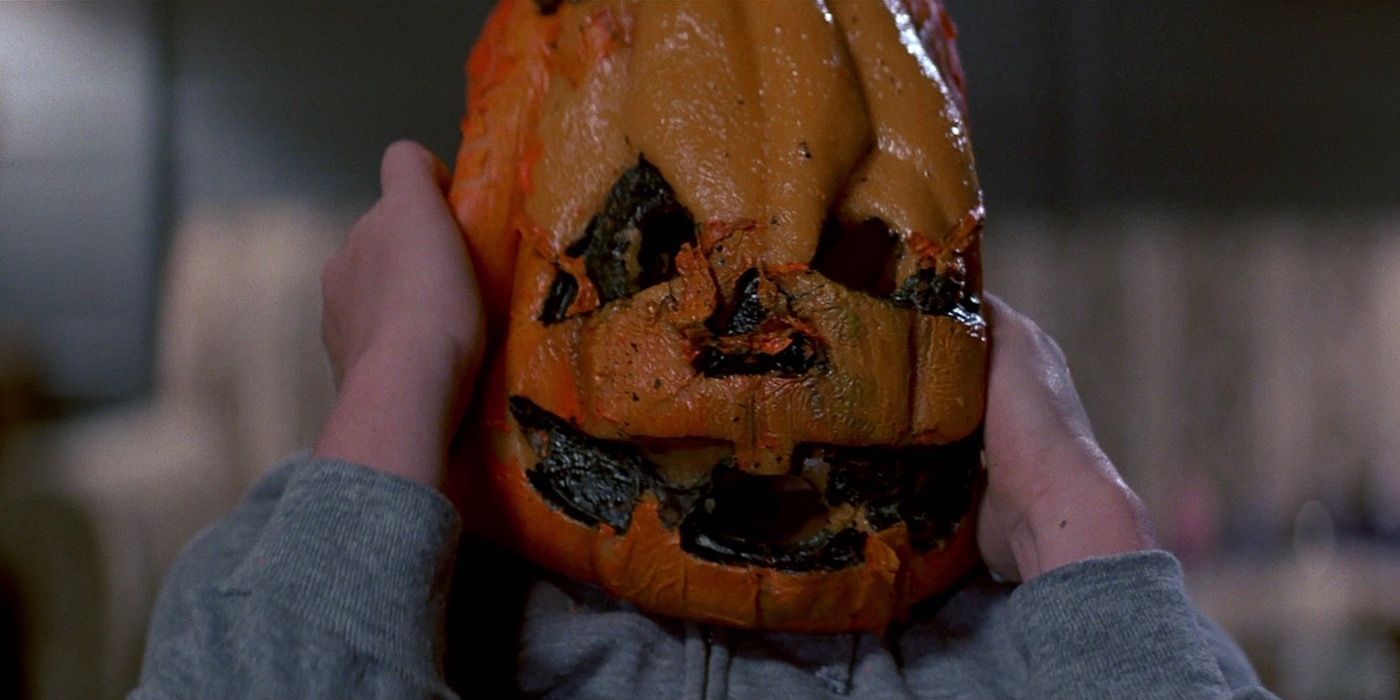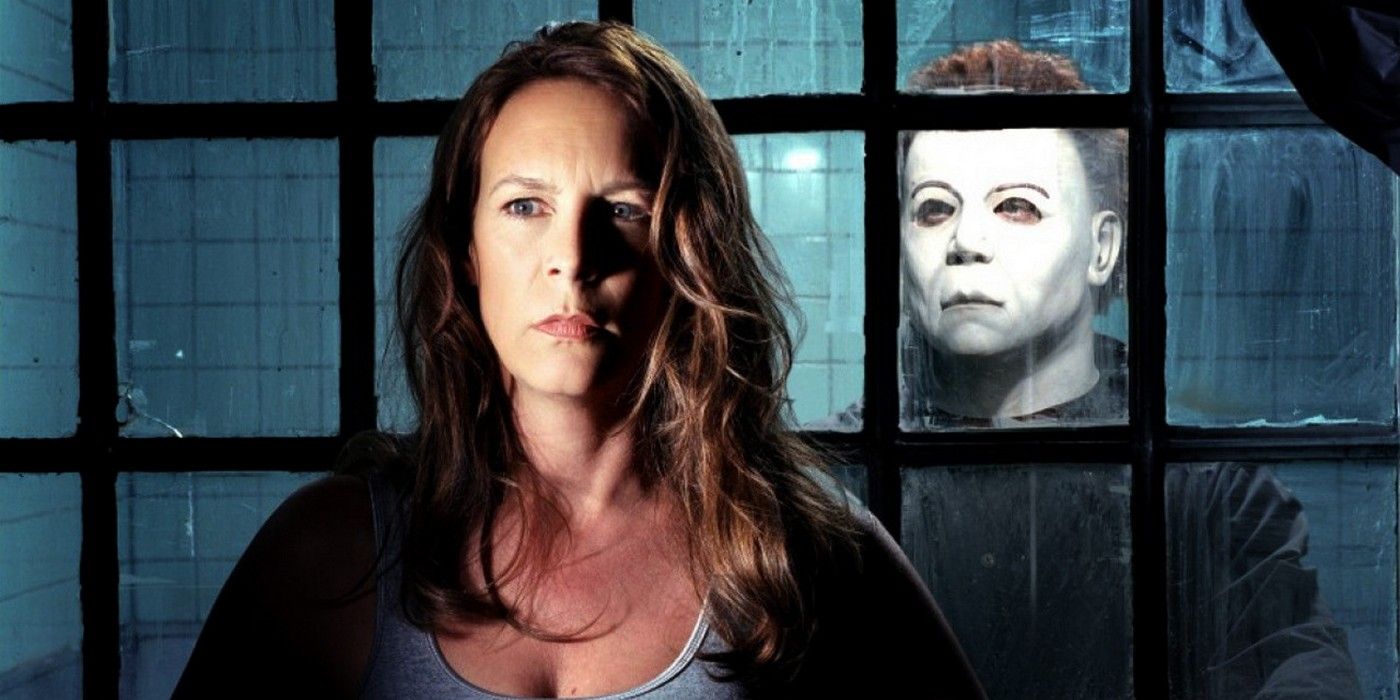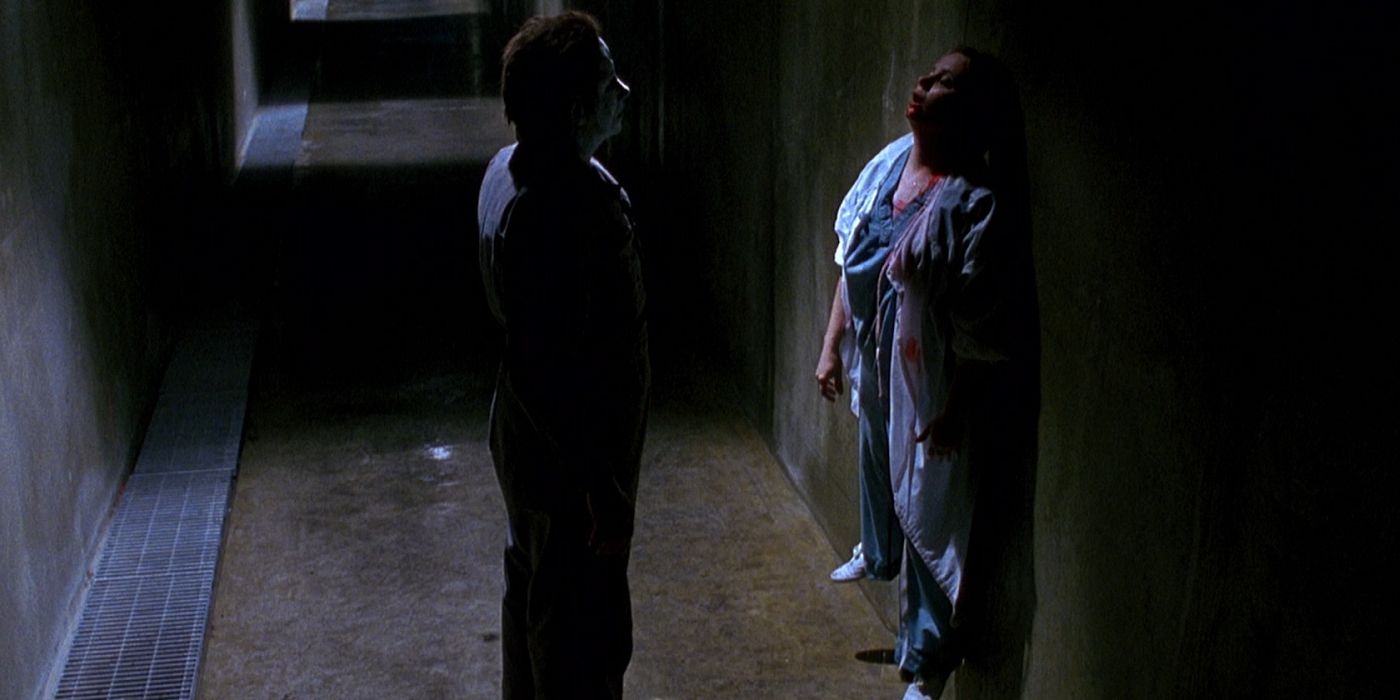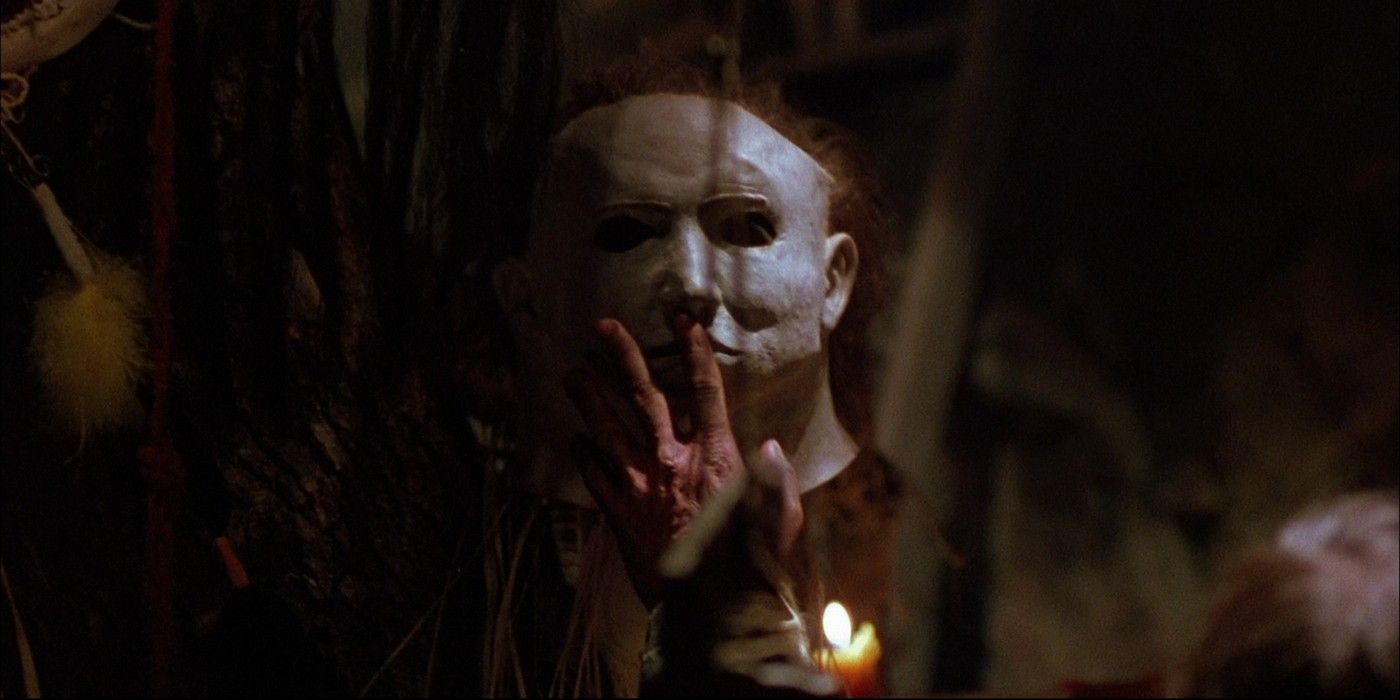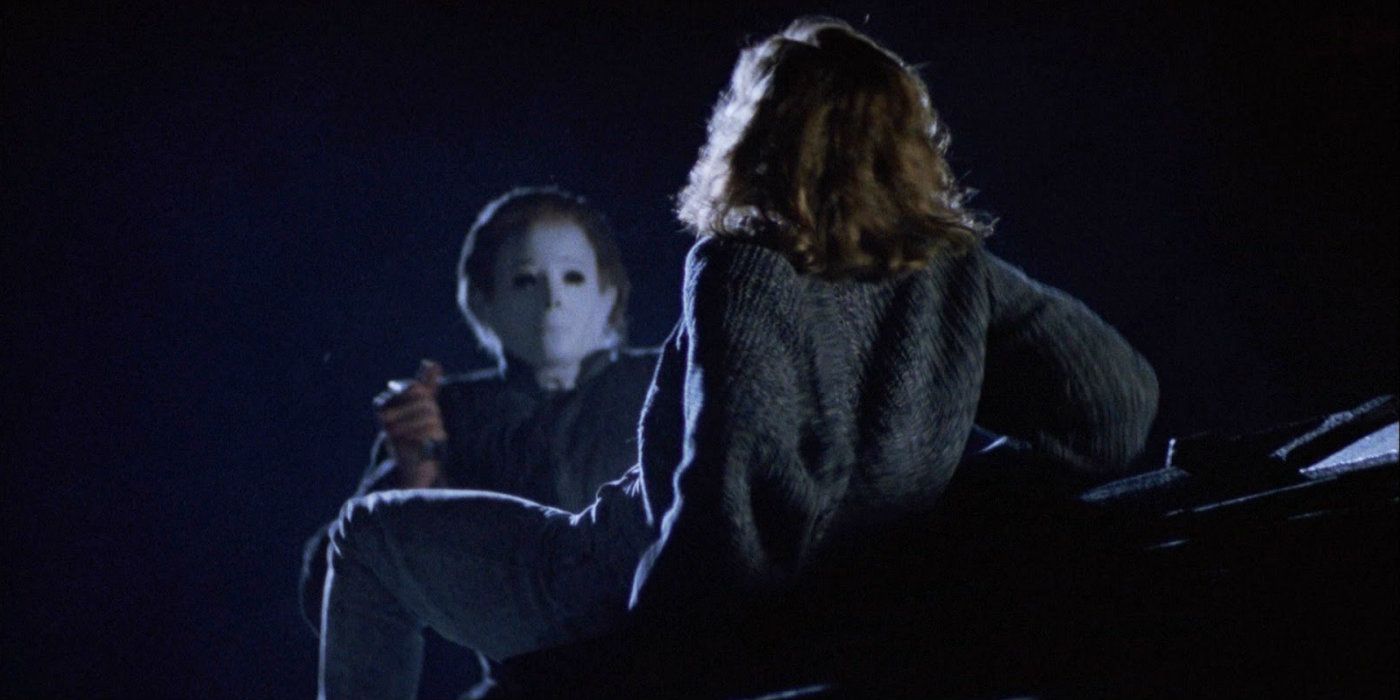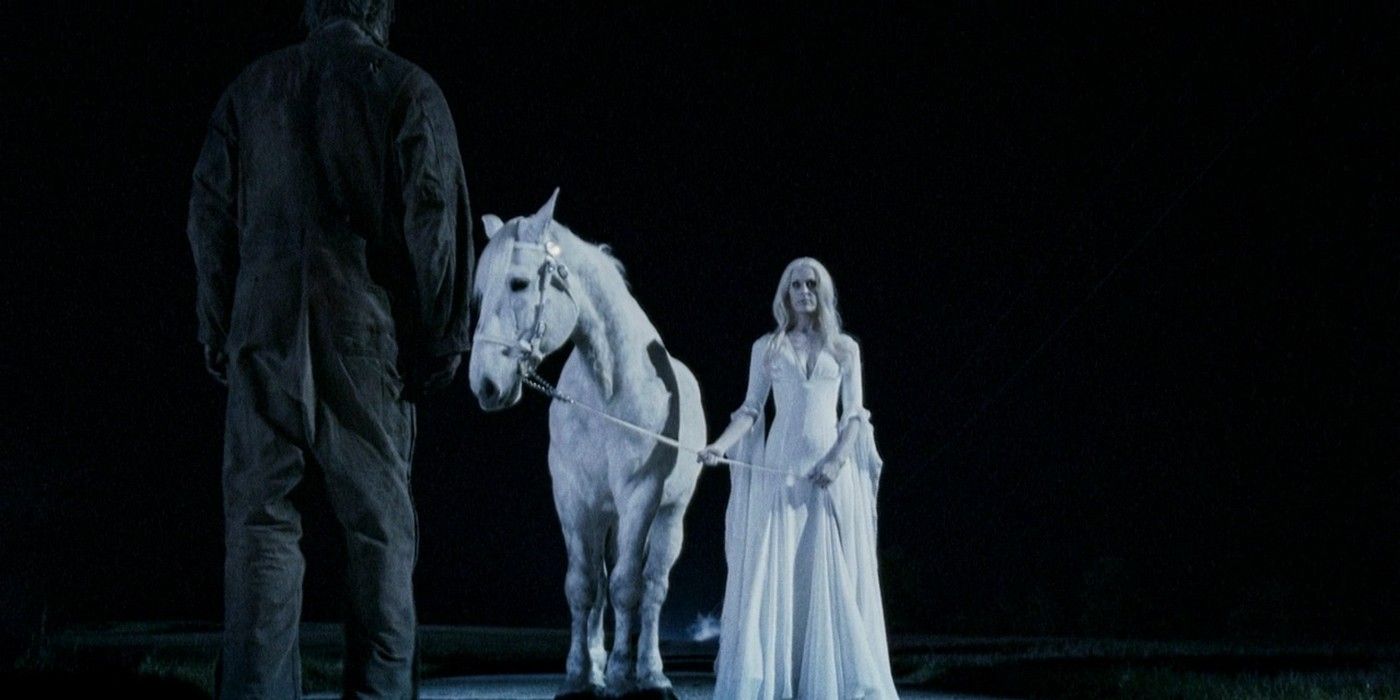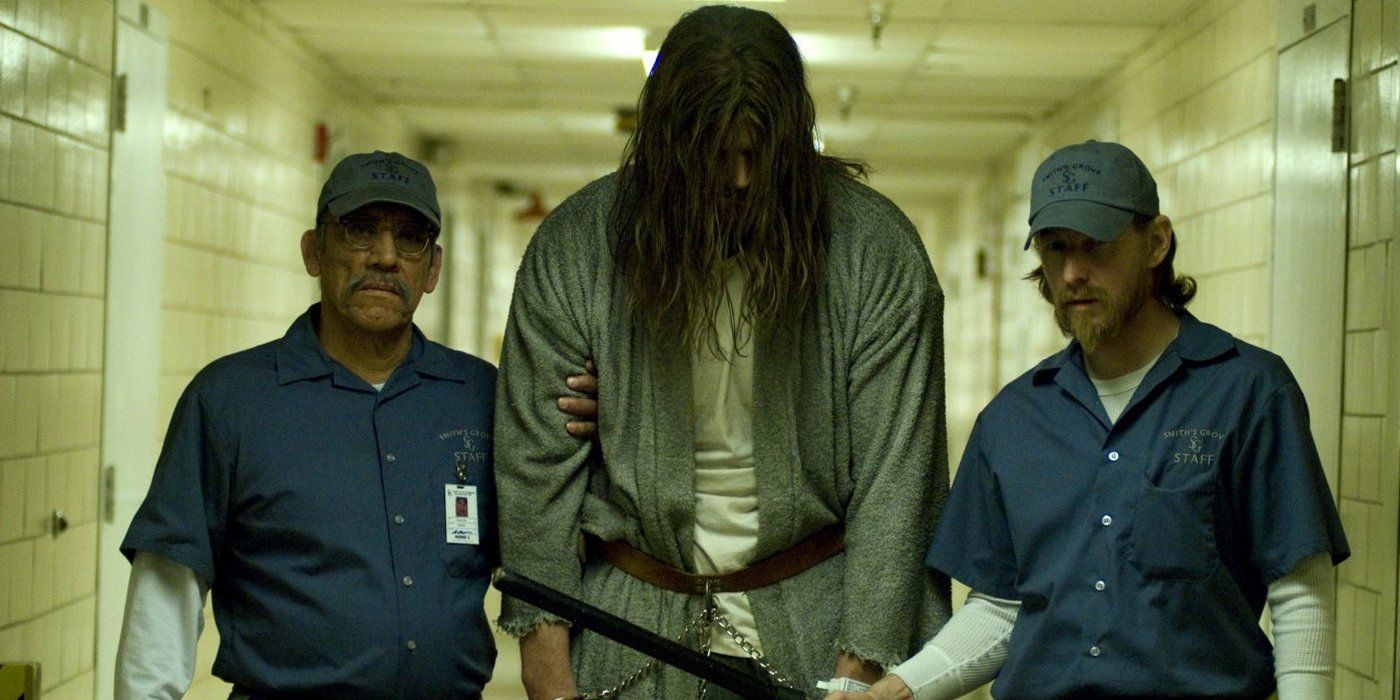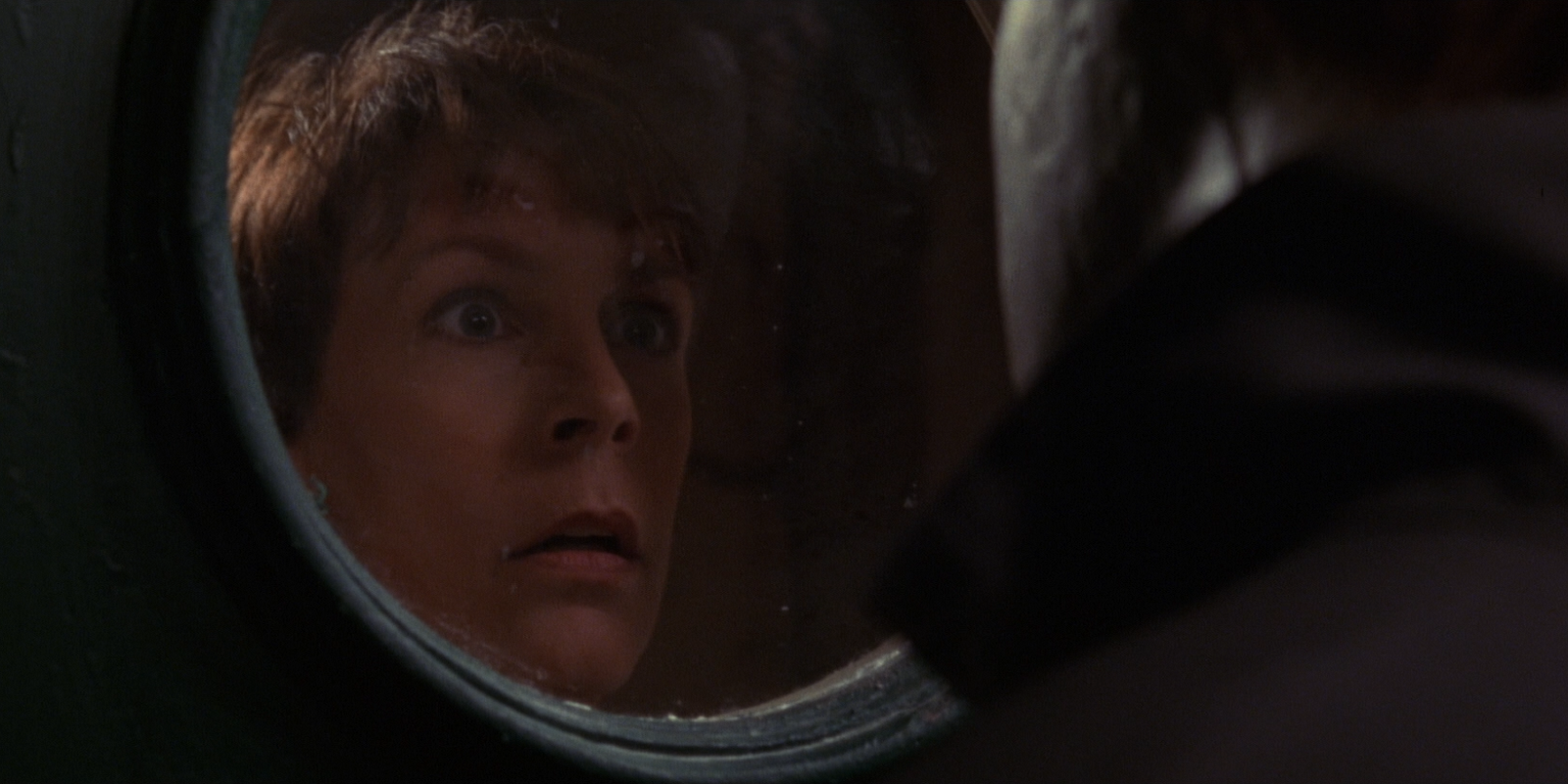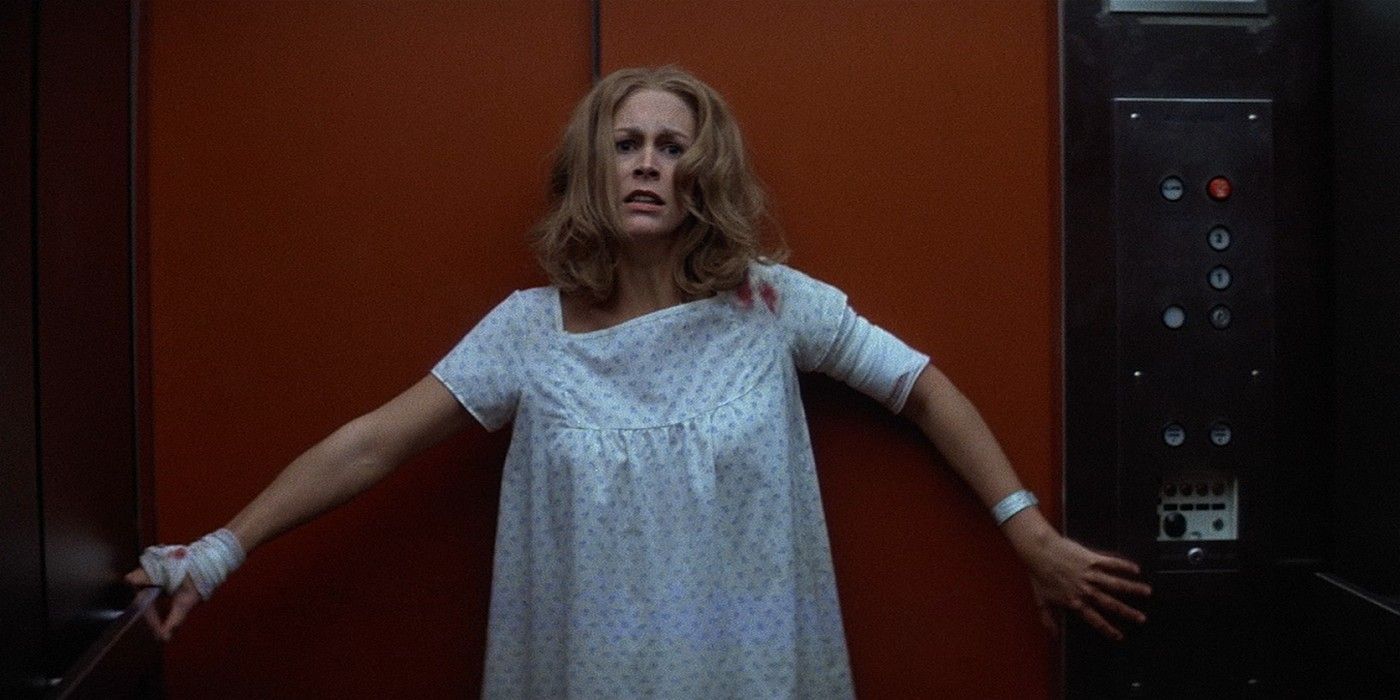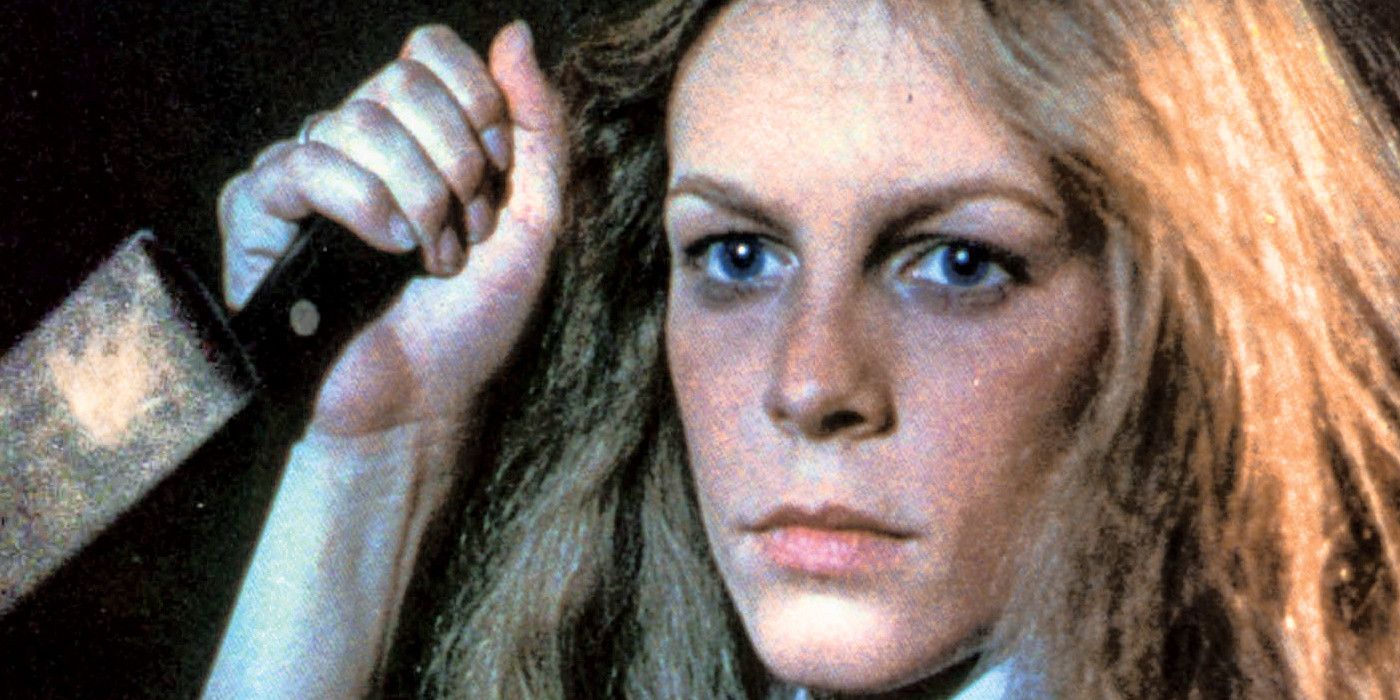Halloween was released in 1978, and horror movies have never been the same since. Made on a tiny budget, John Carpenter's classic not only helped usher in the age of teen slashers, but created one of cinema's great bogeymen - Michael Myers. An unstoppable, incomprehensible force of evil hiding underneath a pale mask, Myers lacks the charisma of Dracula, the pathos of Frankenstein's monster or Freddy Kruger's one-liners. He truly is, as the first movie credits him, "a Shape": a cipher whose lack of personality makes him all the more terrifying as he stalks and slaughters teenagers around the sleepy town of Haddonfield, Illinois.
As such, Myers works best the less the viewers know about him. And yet, over the past forty years, he appeared in movies, novels, comic books and even a video game. Each of them strived to continue, expand, modify and/or recycle the story of Michael Myers, to varying degrees of success. Let's take a look at them with our list of 15 Best Appearances Of Michael Myers.
15. Halloween - a video game for Atari 2600 (1983)
Who would have guess that there's an actual Halloween video game! It was made in 1983 by Wizard Video, a moving picture distribution company started by B-movie veteran Charles Band, producer of such classics as Ghoulies (1984), Re-Animator (1985) and Puppet Master (1989). Under the name Wizard Video Games, Brand's company released The Texas Chain Saw Massacre and Halloween adult-oriented horror games for the Atari 2600 video game console.
In Halloween, the player controls Laurie Strode (credited as "babysitter") as she struggles to protect a child from Michael Myers (aka "homicidal maniac"). Every time the child dies, the player loses one life, which are fittingly represented by Jack-O-Lanterns. Occasionally, a weapon appears, allowing Laurie Strode to temporarily chase Myers away. The Halloween game proved a hard sell due to its violent content, and looking at some of the video walkthroughs, it's easy to see why. Witness, if you dare, the unholy terror of Michael Myers in all of his 8-bit glory!
14. Kelly O'Rourke - The Scream Factory/ The Old Myers Place/ The Mad House (1997)
The cover of The Scream Factory promises: "Michael Myers is up to his old tricks - and it'll be a treat". When a group of teenagers set up a haunted house attraction in the basement of Haddonfield City Hall, they're blissfully unaware of the threat that is Michael Myers. Before you can say "fresh meat", Myers is slicing and dicing his way through a cast of interchangeable kids. Yet, aside of the setting and the presence of Michael Myers, nothing really ties The Scream Factory together with Halloween movies.
Kelly O'Rourke's The Scream Factory was the first book in a loose trilogy of young adult novels published by Berkley Books in 1997 that are pretty much interchangeable with one other. In the second novel, The Old Myers Place, a teenage girl named Mary White moves with her family into the old Myers house, only to have her friends pursued and killed by Myers. The third novel, The Mad House, follows teenager Christine Ray, who helps film a documentary about Smith Grove Mental Hospital only to have her friends... well, you get the picture. One gets the impression Myers was probably as angered as much as embarrassed by being stuck in a Goosebumps ripoff.
13. Curtis Richards - Halloween: A Novel (1979)
Halloween: A Novel by Curtis Richards was released a year after the first movie, boasting the atrocious cover glimpsed above. As is often the case with movie novelizations, the book not only follows the plot of Carpenter's movie, but also offers a possible explanation for the evil and powers of Michael Myers. As we learn in the prologue, long ago, a disfigured Celtic boy Enda butchered the Druid princess Deirdre and her lover. Her father had Enda's soul cursed to relive his crime forever around the time of the pagan festival of Samhain.
What all this implies is that Myers is just the last killer in the long line of Enda's descendants, reincarnations or whatever. This is the first -- but unfortunately not the last -- mention of ancient Druidic rituals in the Halloween series. Also, when you think about it, cursing a brutal murderer to kill even more people is more of an enabling than a punishment. All in all, four Halloween movies received novelizations. The last one, Halloween IV by Nicholas Grabowsky, was published in 1988.
12. Halloween: Nightdance (2008)
Stefan Hutchinson wrote a number of comic books about Michael Myers. In 2003, he and artist Peter Fielding published One Good Scare, a comic book celebrating Halloween's 25th anniversary. A few years later, in 2006, Hutchinson published Halloween: Autopsis. Illustrated by Marcus Smith and Nick Dismas, this stand-alone comic tells a story of a photo-journalist tasked with photographing Myers. As the photographer develops a morbid obsession with the crazy killer, the story leads to an inevitably bloody ending.
Through all these comic books, Hutchinson attempts to return the whole Michael Myers story back to its roots, ignoring all the accumulated weight of the mythology introduced in Halloween sequels. This is best exemplified in Halloween: Nightdance. Released in 2008 by Devil's Due Publishing, Hutchinson's four part mini-series retells and expands upon the original by telling a story of Lisa Thomas, a teenage girl afraid of the dark, who get stalked by Michael Myers. As the situation escalates, dead bodies start piling up all around Lisa's hometown of Russellville.
11. Halloween (2000)
In 2000, Brian Pulido's Chaos! Comics published a special one-issue Halloween comic book, written by Phil Nutman and co-written by Daniel Farrands, who previously worked on Halloween: The Curse of Michael Myers and now developed ideas he never got to use in the movies. The issue was so popular that it was soon followed by two sequels -- Halloween II: The Blackest Eyes and Halloween III: The Devil's Eyes. Nutman worked on all three of them, with the art provided by David Brewer and Justiniano.
All of these comic books follow Tommy Doyle, a kid that Laurie Strode takes care of in the first movie. As an adult, Tommy gets framed for Michael Myers' crimes. After escaping from the asylum, he starts investigating Myers' childhood and learns about his origins. In a fantastic twist, it is revealed that Laurie Strode, after finally killing Michael Myers in Halloween H20: 20 Years Later, picked up his mask and became a mass murderer herself.
10. Halloween III: Season of the Witch (1982)
The only reason Haloween III: Season of the Witch isn't higher on this list is that, despite its title, it has nothing to do with the story of Michael Myers. Indeed, in a nice little self-referential moment, Myers only appears in a TV ad for Halloween. And yet, Haloween III is an interesting oddball of a movie. It follows Dr. Dan Challis (Tom Atkins) as he uncovers a lunatic's nightmare of a conspiracy that combines high-tech technology with the ancient magic of Stonehenge to a gruesome effect. There are robots, too!
With Halloween III, John Carpenter and his longtime collaborator Debra Hill wanted to turn the franchise into an anthology series of standalone horror movies. But for the audience expecting another Myers-Strode slugfest, this was a huge letdown. The movie bombed, and the idea of an anthology series of movies was dropped. Yet, as directed and co-written by Tommy Lee Wallace (who went on to adapt Stephen King's It), Halloween III is an entertaining, low-budget horror flick. And we double dog dare you to get the movie's annoying jingle out of your head!
9. Halloween: Resurrection (2002)
Watching the end of Halloween H20: 20 Years Later, one could assume that the saga of Michael Myers was truly and finally over. After all, didn't Laurie Strode just lope Myers' head off? Well, one would be wrong because, four years later, out came yet another Halloween movie! Halloween: Resurrection was directed by Rick Rosenthal, who helmed Halloween's first (and quite possibly bes)t sequel way back in 1981. Unfortunately, that's just about the only thing the movie has going for it.
Not only do we learn that Laurie Strode has failed to murder Michael Myers (here played by a Canadian stuntman Brad Loree), but she also ended up in an asylum. She's killed by Myers in the first 15 minutes, thus granting Jamie Lee Curtis sweet, sweet release from this series. After that, it's all about some darn crazy youngsters with their internets, palm pilots and reality TVs. One of them is played by Katee Sackhoff, who would go on to appear in a much better fare like the Battlestar Galactica reboot. Oh, and Busta Ryhmes gets to roundhouse kick Michael Myers.
8. Halloween: The Curse of Michael Myers (1995)
Watching the sixth Halloween movie tells us a lot about the sad state of the horror genre in the mid-1990s. By that time, both the Halloween franchise and the slasher subgenre itself were losing steam, and Wes Craven's Scream was still a year away. The Curse of Michael Myers is pretty much utter nonsense: a story about a baby that's wanted by both Michael Myers and a creepy ancient cult, who end up fighting each other and causing plenty of collateral deaths between them.
The Curse of Michael Myers went through a troubled production. Screenwriter Daniel Farrands tried and failed to tie the mythology from all the previous Halloween movies together while expanding on it, while producers from Dimension Films demanded more gore. Some 40 minutes of the movie ended on the cutting room floor and there were extensive reshoots. Finally, sadly, The Curse of Michael Myers marked the last on-screen appearance of Donald Pleasence as Dr. Loomis, as the famed actor died in November of 1995.
7. Halloween 5: The Revenge of Michael Myers (1989)
The fourth Halloween movie ends with a killer twist -- pun intended -- when Laurie Strode's eight-year old daughter Jamie (Danielle Harris) murders her step-mother in the same way young Michael Myers killed his sister decades ago. This awesome idea is quickly dropped in Halloween 5: The Revenge of Michael Myers, because a movie about a child murderer possessed by the ghost of Michael Myers might have been too interesting and original.
Instead, Jaime (Danielle Harris again) is made mute by the shocks from the last film. She also develops a psychic link to Myers, which makes Dr. Loomis (Pleasence again) yell at her and shake her like's she's a defective smart phone as he tries to learn about Myers' whereabouts. Myers gets to kill a whole bunch of teenagers (again), change his mask and drive a car. It all culminates in a scene when Myers tries to kill young Jaime, only to instead shed a single tear. Awww!!!
6. Halloween 4: The Return of Michael Myers (1988)
After the commercial failure of Halloween III: Season of the Witch, the franchise laid dormant for years, much like Michael Myers in Smith Grove Mental Hospital. But the mass murdering psychopath wasn't done yet, and Halloween 4: The Return of Michael Myers came out in 1988, just in time to celebrate Halloween's tenth anniversary.
Halloween 4 is what we today call "a soft reboot" -- a concept that once used to be so rare, it didn't even have a name. The movie recycles the story of the original and introduces new characters, while ignoring most of the events from the sequels. Loomis and Myers die at the end of Halloween II only to now return alive and (mostly) unharmed. Laurie Strode managed to make it through two movies, but here, she's killed off-screen in a car crash. Her role is taken over by Ellie Cornell's Rachel Carruthers, a babysitter looking after Laurie's eight-year old daughter Jamie (Danielle Harris). As played by stuntman George P. Wilbur, Myers is not so much a supernatural menace as he is The Terminator, setting up traps, riding underneath cars and, at one point, going on a rampage inside a police station.
5. Halloween 2 (2009)
In his first Halloween movie, Rob Zombie offered his own take on Michael Myers' origins as well as the events from Carpenter's movie. Fans of the franchise were sharply divided, but Rob Zombie's Halloween was a commercial success. Two years later, Zombie was brought on board once again to direct a sequel.
For better or worse, Zombie was allowed more leeway here, and it shows, as Halloween 2 is filled with striking imagery. The movie takes an interesting turn as both Myers (Tyler Mane) and his sister Laurie Strode (Scout Taylor-Compton) are haunted by the 7-year old version of Myers (Chase Wright Vanek ) as well as by his dead mother (Sheri Moon Zombie). Meanwhile, Dr. Loomis (Malcolm McDowell, who was excellent in the role) publishes a best-selling book about Myers and his grisly murders. However, Zombie's exploration of a psychological connection between Laurie Strode and Michael Myers is marred by the unnecessarily amped up killings and gore. All in all, Halloween 2 is a heavily flawed, albeit interesting, movie.
4. Halloween (2007)
By 2007, hiring former rock musician Rob Zombie to direct a Halloween sequel/reboot was a sensible choice. On one hand, Zombie had by that time already gained some amount of fame (and notoriety) by directing movies such as House of 1000 Corpses and The Devil's Rejects. On the other hand, in a franchise filled with bad creative choices and clumsy resets, he could hardly do it much harm.
And sure enough, Rob Zombie delivers. For better or worse, he brings his own unique vision to the venerable franchise. There's the brutal violence, striking imagery, white trash characters, and Sheri Moon Zombie. Not satisfied with merely retelling the first Halloween, Zombie also re-invents Michel Myers' origin story. The killer himself is brought to life by former professional wrestler Tyler Mane, who, at 6'8, was the tallest actor to ever take on the role. As Dr. Loomis, Malcolm McDowell (A Clockwork Orange) fills out perfectly the void left by the late and lamented Donald Pleasence. Not only that, but Zombie has a spectacular bunch of movie veterans parading through the movie, from Danny Trejo (Machete), Richard Lynch (Invasion USA) and Udo Kier (Blade) to character actors such as William Forsythe (Boardwalk Empire) and Brad Dourif (Deadwood).
3. Halloween H20: 20 Years Later (1998)
One of the best sequels in the Halloween franchise was directed by Steve Miner, who previously worked on two installments in that other long-running horror saga, Friday the 13th. Although the movie's screenplay was written by Robert Zappia and Matt Greenberg, it was heavily influenced by screenwriter Kevin Williamson, who, fresh from the Scream franchise, brought his meta-textual touch.
Similar to Halloween 4, Halloween H20 deliberately ignores all the other sequels. Instead, it tells a story how, twenty years after the events of the first film, Michael Myers comes back to finally finish off Laurie Strode (Jamie Lee Curtis, reprising her role for the second time). However, Strode had had two decades to prepare herself for Myers' inevitable return. Halloween H20 also boasts a surprisingly great supporting cast that includes Michelle Williams (Shutter Island), Joseph Gordon-Levitt (The Dark Knight Rises), Josh Hartnett (Penny Dreadful), Janet Leigh (Psycho) and Adam Arkin (Sons of Anarchy). With a solid story and a great cast of up and comers, most horror fans would agree that H20 is the most deserving sequel the franchise had seen in a long time.
2. Halloween II (1981)
The first sequel to Halloween is by far the best. That isn't saying all that much, but Halloween II at least tries to mimic the style of the original. After the success of the first movie, and the rise slasher genre in general, a sequel to Halloween was so inevitable, it's surprising that it took three years to film it. Carpenter and Hill faced a huge creative challenge in their script: how to expand on what was a perfectly self-contained horror story without diminishing it in the process?
Their answer was to continue the story literally seconds after the first movie ends. As Laurie Strode (Jamie Lee Curtis reprising her role) is rushed to the hospital, Myers (played by the wonderfully named Dick Warlock) chases after her, which, of course, makes Dr. Loomis chase after Myers. Director Rick Rosenthal does his best to imitate Carpenter's style, but it's Carpenter himself who inserts the scenes of gory murders, as well as the story of Samhain festival and a soap opera twist that Myers is Laurie Strode's long-lost brother.
1. Halloween (1978)
Often imitated but never surpassed, the original Halloween still holds up almost four decades after its release. Forget the screaming starlets, gruesome kills and the whole Samhain nonsense. Halloween remains effective precisely because of its minimalistic approach. Terror comes as darkness descends on a sleepy Midwestern town, and we begin to dread the moment when Michael's pale mask will emerge silently from the shadows. He's an unknowable, unstoppable force of evil, and it's those qualities that makes him truly terrifying.
Three actors portray Michael Myers In Halloween. Will Sandin plays him as a young boy, and Tony Moran portrays unmasked grownup Michael. For the most of the movie though, the character is played by actor/director Nick Castle, who later went on to helm The Last Starfighter. Filmed for a mere $325,000, Halloween went on to earn $70 million at the box office. Although it's far from the first slasher horror ever made, it remains, together with movies like Tobe Hopper's The Texas Chainsaw Massacre and Wes Craven's Nightmare on Elm Street, one of the great classics of the genre.
---
What is your favorite Halloween movie? Aside of the first one, of course! (That's not really debatable, is it?) Share your thoughts in the comments.

